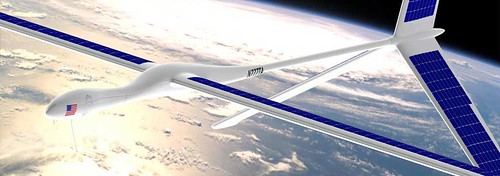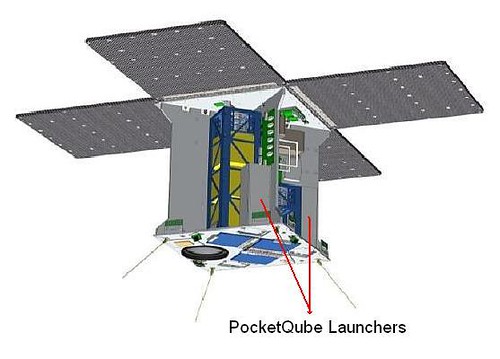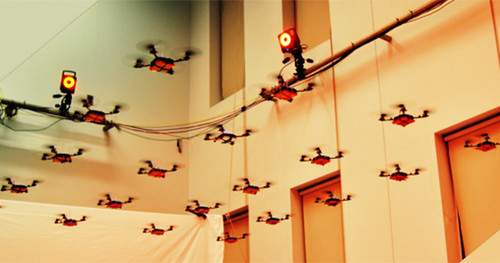How would you build the next Internet? Loons, Drones, Copters, Satellites, or Something Else?
 Wednesday, January 22, 2014 at 9:06AM
Wednesday, January 22, 2014 at 9:06AM If you were going to design a next generation Internet at the physical layer that routes around the current Internet, what would it look like? What should it do? How should it work? Who should own it? How should it be paid for? How would you access it?
It has long been said the Internet routes around obstacles. Snowden has revealed some major obstacles. The beauty of the current current app and web system is the physical network doesn't matter. We can just replace it with something else. Something that doesn't flow through choke points like backhaul networks, under sea cables, and cell towers. What might that something else look like?
Google's Loon Project

Project Loon was so named because the idea was thought to be loony. Maybe not.
The idea is to float high-altitude balloons 20 miles in the air to create an aerial wireless network with up to 3G-like speeds. Signals travel through the balloon network from balloon to balloon, then to a ground-based station connected to an Internet service provider (ISP), then onto the global Internet.
There are elements here common to several of the aerial solutions. Stations in the air, be that a drone, balloon, copter, or satellite carries some sort of communication equipment. And some form of Aerial OS implementing data plane management along with a control plane and management plane, acts like a cellular network, with users being handed off to different stations as they move and as the stations move and as new stations are added or drop out of range. You can see this having some complexity, but it's doable.
The weakness is that it plugs into the global Internet so it flows over all the same corrupted links. With enough coverage would it be possible to connect directly to devices with the signals being routed only in the air?
The Drones are Here the Drones are Here

This is a picture of the Solara 60 drone from Titan Aerospace. It's a beast. I has a 250 pound payload, which should be enough for communication equipment and perhaps enough memory and CPU power to be a decent caching node. It can reportedly fly at 65,000 ft for weeks powered by efficient solar cells. Of course power for the computing equipment is still an issue.
And oh look, it already supports voice and data communications. As you might expect they are targeted initially at the military and law enforcement agencies, because they get all the cool expensive stuff first, but over time you can imagine costs dropping into the hobbyist range so that we could have a beowulf cluster of these things providing an alternative Internet.
The advantage over the Loon is the drone is not at the mercy of the wind, though the Aerial OS should be able to integrate stations from any platform.
PocketQube Satellite

Swarming Copters

By now you've probably seen the spooky video of the swarming nano-copters. While these can't provide backbone Internet connectivity, they could provide local or even regional mesh connectivity and then integrate in with the Aerial OS to route to the broader Internet constructed from the other technologies.
In this type of architecture edge caching and edge computing strategies become key as latency requirements would dictate not accessing a centralized cloud for services.
The beauty of personal copters is these will be affordable so the pool of resources can easily grow and as people put more into operation. Something like how BitTorrent makes use of p2p resources. What they lack in staying power and capacity could be made up for in quantity.
Would it work?
Obviously this is not a fleshed out proposal. Technical issues abound. Every idea explodes into a tree of implementation details many levels deep, including RF, power, governance, security, protocol design, and so on.
What is exciting is it seems technologies are coming together so that we can do something different. Something beyond a completely closed system of cell towers and fiber backhauls.
You can start to see pools of communication resources dynamically coming together and being managed by an Aerial OS that connects and routes everything together over a diverse infrastructure owned and run by a diverse set of participants. And with a different infrastructure in place you can start to imagine different ways of structuring data and applications to utilize massively distributed compute resources.
It's a little bit chaotic. But it's a little bit exciting too.
Or do you have something completely different in mind?














Reader Comments (6)
wow, this stuff is very exciting
Here are some hurdles:
1.) Price: how cheap is a balloon or drone, including maintenance & operations?
2,) Quantity: how many balloons/drones does one need to make a mesh network in the sky?
3.) Weight: how heavy are the radios/servers that need to be suspended in the sky?
4.) Energy: good networks need high bandwidth, where is the energy coming from? solar? carrying fuel is heavy for airborne objects
5.) Legal/Politics: privately held drones, heli-drones, & balloons w/ spy equipment, the media would have a FUD field-day
6.) Us: the consumers & hobbyists. To date, there are no massively successful mesh networks built from wi-fi, even though the prices for hardware are in the hobbyist range and there are tons of reasons for this (wifi sucks, semi-legal, etc...), but IMO in this day and age people would rather let a large company do the work for them (e.g 3G or LTE networks) and then pay this large company for the network than build a network themselves as a community, no one has time for another hobby.
That said, I think this idea in general is brilliant and has promise, but it has some daunting hurdles.
We are starting to see private clouds come into their own, maybe this type of innovation will be the rise of private nets :)
awesome future looking article
It looks like someone is in the process of evaluating this concept for a real deployment.
Source: http://rt.com/usa/outernet-cubesat-free-internet-153/
Excerpt:
Developers say they are less than a year away from deploying prototype satellites that could someday soon broadcast free and universal internet all over the globe from high in orbit.
The “Outernet” project being bankrolled by the Media Development Investment Fund (MDIF) of New York is currently in the midst of conducting technical assessment of the project, but say by June they hope to develop test satellite in order to see how long-range WiFi would work if beamed down by a tiny 10x10x10-centimeter payload called a CubeSat.
Currently they are only planning on having one way communication, from the satellites to any device that is listening and full two way communications will come in a later version. Their are cost estimates, are $100K per 10x10x10cm satellite.
Well Facebook got on that right quick: Facebook wants to use drones to blanket remote regions with Internet - http://www.dvice.com/2014-3-5/facebook-wants-use-drones-blanket-remote-regions-internet?
Google jumped on this concept as well
http://www.wirelessweek.com/news/2014/04/google-use-drones-improve-wireless-broadband-coverage
Google's answer
Google Invests in Satellites to Spread Internet Access
Company Projects Spending More Than $1 Billion to Connect Unwired Reaches of the Globe
http://online.wsj.com/news/article_email/google-invests-in-satellites-to-spread-internet-access-1401666287-lMyQjAxMTA0MDAwMTEwNDEyWj
More on Facebook building the next internet with drones
http://www.wired.com/2014/09/facebook-drones-2/?mbid=social_fb